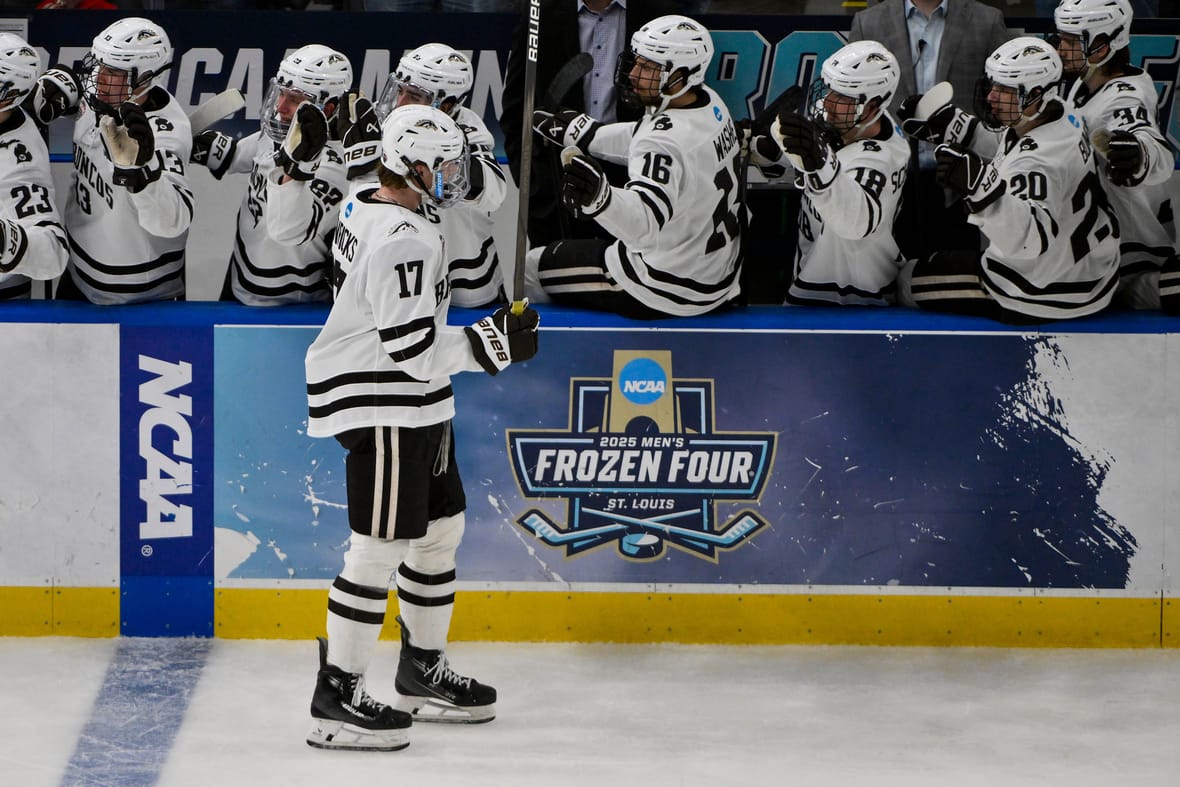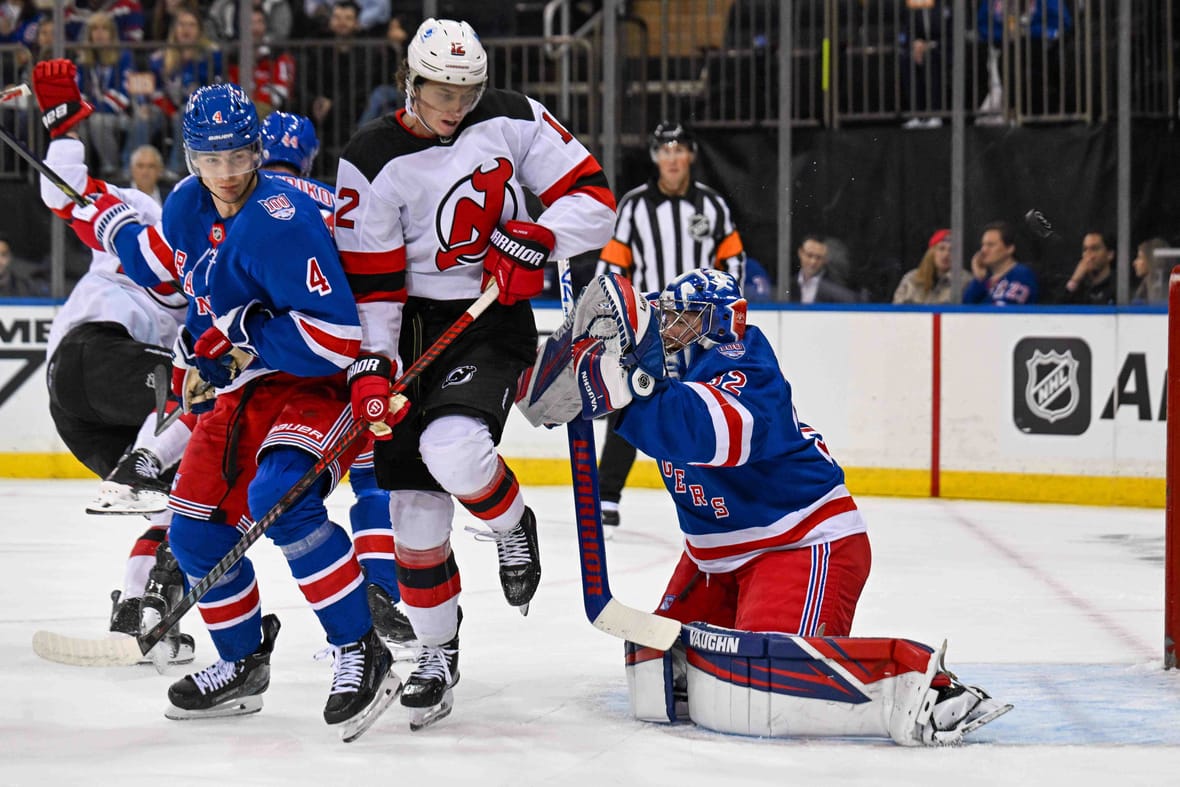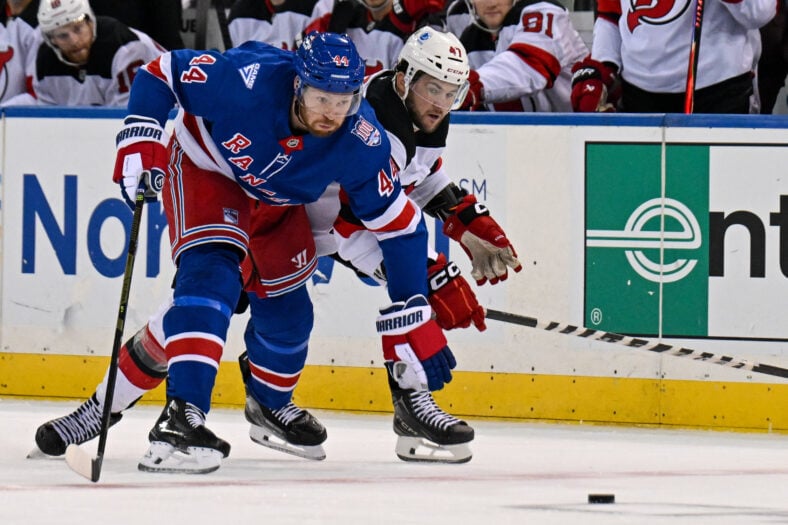New York Rangers
Face of the Franchise
Two ex-Rangers among 23 players to hit NHL waiver wire Sunday
Source: https://www.foreverblueshirts.com/new-york-rangers-news/zac-jones-jake-leschyshyn-nhl-waivers/

Wendell Cruz-Imagn ImagesWendell Cruz-Imagn Images
Two former members of the New York Rangers were among 23 players to hit the NHL waiver wire Sunday.
Defenseman Zac Jones, who spent parts of five seasons with the Rangers, and forward Jake Leschyshyn were placed on waivers by the Buffalo Sabres.
In addition, forward Alex Belzile, who was an AHL All-Star last season with the Rangers’ affiliate in Hartford but became an unrestricted free agent on July 1 and signed with the Montreal Canadiens, was played on waivers for the purpose of sending him to Laval of the AHL. Belzile spent two seasons in the Rangers organization but never dressed for an NHL game.
Jones became an unrestricted free agent on July 1 after the Rangers elected not to tender him a qualifying offer. The lefty-shooting defenseman signed a one-year contract with the Sabres.
Today’s waiver wire:https://t.co/so7qgeK2D3 pic.twitter.com/GKl3z6N1CO
— PuckPedia (@PuckPedia) September 28, 2025
In 46 games with the Rangers last season, Jones had 11 points (one goal, 10 assists) and 46 blocked while averaging 17:15 of ice time. He also scored one goal in two games for Hartford. In 115 games during five seasons with the Blueshirts, he had 28 points (four goals, 24 assists) and was minus-10.
Jones began last season on the third defense pairing, then lost playing time to rookie Victor Mancini – who was sent to the Vancouver Canucks in the trade that brought center J.T. Miller back to the Rangers. Jones re-established himself in the top six only to be supplanted by incoming defensemen Urho Vaakanainen, Calvin de Haan and Carson Soucy after a flurry of trades.
But when the Rangers’ best defenseman, Adam Fox, went down with an injury in late February, Zones got back into back into the lineup and largely played well.
Related: Rangers stock report: Who’s trending up, down halfway through preseason
“I thought there were some good parts of the year,” Jones said on breakup day. “When I had some consistent time, I thought I played well. I thought my defensive game was a lot better this year as opposed to years prior. I lost the offensive game a little bit, but that’s something that this summer I’m really going to try and focus on and get back to.”
Per Natural Stat Trick, Jones was on ice for 157 high-danger scoring chances against and just 118 for, and the Rangers’ expected goals 5v5 was 47.79 percent when he was on the ice.
Sabres place former Rangers Zac Jones, Jake Leschyshyn on waivers
The rub against Jones continued to be that he was viewed as being too small (he’s listed at 5-foot-11, 190 pounds) to adequately defend in his own end. But the Rangers certainly could have used his ability to move the puck quickly and exit the zone smartly when they imploded as a group defensively in 2024-25.
Consistent playing time was the biggest issue for Jones, who made his frustration known in an outburst to the media during an extended stretch when he was out of the lineup. It was a major struggle for Jones, who had stayed mostly optimistic throughout his time in the organization but told reporters in January, “I just feel like I’m rotting away a little bit.”
Leschyshyn also became a free agent when he did not receive a qualifying offer from the Rangers and ended up signing with the Sabres. He spent all of last season with Hartford, finishing with 24 points (13 goals, 11 assists) in 69 games.

Eric Canha-Imagn Images
The son of longtime NHL defenseman Curtis Leschyshyn played in a total of 14 games with the Rangers in 2022-23 and 2023-24. He was scoreless and went minus-4 with 17 hits.
Belzile had 19 goals, a team-high 56 points and 119 penalty minutes in 66 games with the Wolf Pack last season, his second with Hartford after signing with the Rangers in the summer of 2023. The 34-year-old signed a one-year contract with the Canadiens this summer. All 44 of his NHL games came with the Canadiens from 2020-21 to 2022-23; he scored six goals and 15 points. All but one assist came in 2022-23, when he played 33 games for Montreal.
Among other notable names to hit the waiver wire Sunday were ex-Islanders forward Hudson Fasching (Columbus Blue Jackets), forward Brendan Gaunce (Blue Jackets) and forward Kole Lind (Dallas Stars).
Source: https://www.foreverblueshirts.com/new-york-rangers-news/zac-jones-jake-leschyshyn-nhl-waivers/

























































